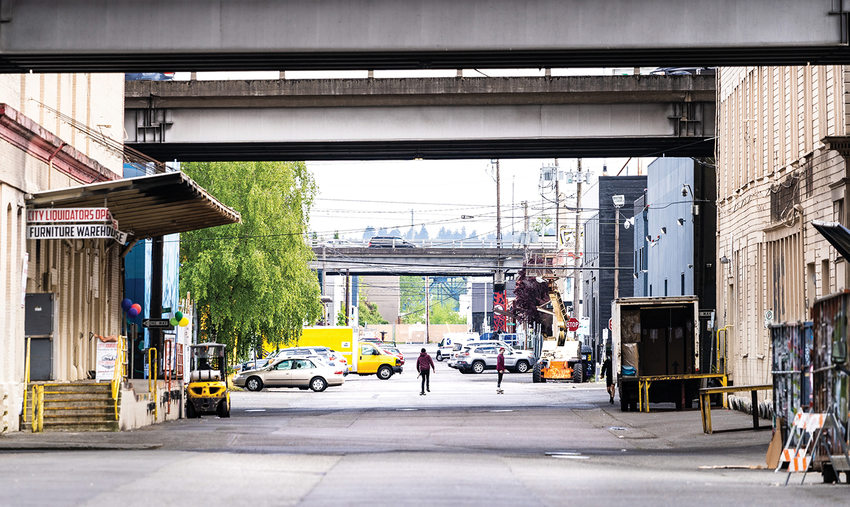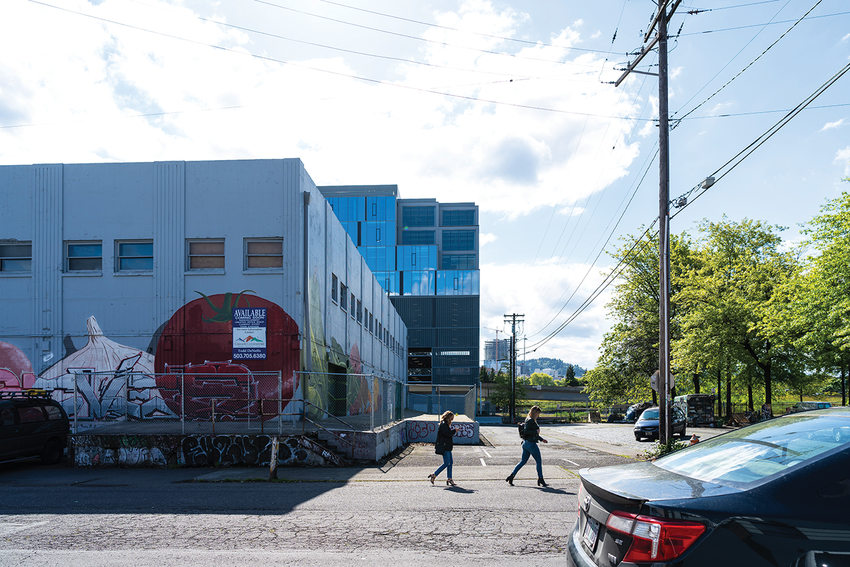Expanding the benefits of backyards
Metro at times contracts with neighborhood users to publish about newsworthy matters from their standpoint as a member of a traditionally marginalized community, such as people of colour, immigrants and refugees, minimal-money citizens and folks of various skills. These pieces are meant to present significant points of check out and do not essentially represent the thoughts of Metro or the Metro Council.
Vivek Shandas is a professor of weather adaptation and director of the Sustaining Urban Areas Study Lab at Portland State University. Through his investigate, teaching, and local community support, Professor Shandas supports the development of built environments that align with ecological dynamics and middle social justice.
Professor Shandas serves on Metro’s Purely natural Regions and Cash Functionality Oversight Committee.
I’m encouraging my father discover a house in Portland. As a current widower, he’s looking for a little, one-loved ones household household. As an octogenarian, a single-story he can simply move about is critical. As a latest arrival to the Portland area, he desires to be in Northeast Portland, close to me and my family members. As anyone who immigrated to the United States more than 40 several years back and generally lived in suburbs, he insists on possessing a yard.
Even though all of his specifications look sensible, the one I are unable to have an understanding of is his insistence on obtaining a yard. Our debates revolve close to whether or not he will devote time in the backyard, if it’s functional presented his ambulatory issues, and no matter if it’s a precedence provided all the other wants and the limited source of out there properties through the ongoing pandemic. A yard, to me, seems like a trivial attribute considering that regional parks can offer alternatives for outdoor time and connections to mother nature.
Why, I talk to him, is a backyard such an vital area?
My father’s love for the yard is no accident. He grew up in India, where these kinds of own outdoor spaces not often exist in dense metropolitan areas. The identical was accurate in the United States not way too long in the past. In reality, in advance of the 1950s, a backyard in any U.S. city mainly served sensible purposes, including meals production, livestock, storage – it is where by the outhouse sat. It was a farm in miniature, not a garden refuge. When indoor plumbing, refrigeration and appliances started to fill homes, and much larger grocery stores showed up, the purpose of the backyard transformed.
Through the 1950s and ’60s, cautiously crafted messaging prompt that a backyard is far more than a actual physical space: It’s an emblem of center-class achievement. Advertisement campaigns nevertheless give these messages, reinforcing the relevance of acquiring leisure, recreation and family lifestyle in a backyard. Fencing, lawn fertilizers, barbecues, patio furniture and a host of other goods are offered as the applications to develop backyards that aid a healthful existence.
The yard provides a fresh breath. It can even provide a experience that transcends our fast thoughts and strengthens our romantic relationship to nature.
In a lot of strategies, the backyard displays a like affair with advantage and independence – hallmarks of American rhetoric. The yard is quintessential to the advertising and marketing of the American Desire. It’s component of what my father and quite a few in his social circles approved as symbols of achievement and possessing arrived at a far better lifestyle than the one particular he remaining in Asia.
There is a great deal of meaning in individuals several hundred sq. feet behind his excellent house. Even past the perceptions of social class and virtue, the backyard presents a fresh new breath. It can even present a emotion that transcends our speedy views and strengthens our relationship to character.

Photograph by Fred Joe
Yet in hunting for homes, and even with our arguments about his will need for a personal outside room, I’ve promptly occur to see that the high quality and distribution of backyards mirror long-standing guidelines that have formed lots of of our towns across the United States.
As a professor and environmental guide, the lookup for my father’s residence has raised queries about whether or not a easy feature of the outside house is also emblematic of the programs of land allocation that privilege some previously mentioned other folks.
What created these types of inequities in the availability of individual out of doors spaces inside of and throughout the neighborhoods? How are people past wrongs main to damage currently? Could the locations with bountiful backyards assist decrease the pernicious consequences of local weather modify?
As I looked into the regions with a lot more and much less backyard space, I observed that parts of larger Portland with historically minimal investments in fact experienced a lot less accessible backyard room and also much less (and smaller) parking strips exactly where trees and other big vegetation could be planted. Upon digging even more, I noticed that age-outdated city preparing policies, even some formally rescinded by the civil rights acts of the 1960s, are even now in play now.
The most evident and well-documented case in point of our preparing method privileging certain neighborhoods is the federal codification of neighborhood-centered segregation tactics, usually identified as redlining. Starting up in the 1930s, redlining began as a indicates for defining hazards for federally backed mortgages all through the Wonderful Depression. The software created hundreds of city maps that delineated neighborhoods as “hazardous” or “definitely declining” and other people as the “best.”
The change concerning a neighborhood marked blue or environmentally friendly for great, and qualified for federally backed home loans, and 1 marked red for poor, and disqualified from people mortgages, was who lived in every single. White, rich people lived in the inexperienced and blue neighborhoods, when the redlined neighborhoods were being home to people of shade, reduced-earnings white people today and immigrants from southern and Eastern Europe.
Turns out that redlining and other racist housing policies led to lower land values in these neighborhoods. Homes ended up constructed on scaled-down heaps with smaller sized backyards. Industrial internet sites, major-box outlets and significant highway projects took gain of the low land selling prices. Those land-hungry developments made landscapes of asphalt and concrete, lessening options for greening these neighborhoods.
Redlining, racial covenants and other racist zoning methods led to the inequitable distribution of green areas in U.S. towns. In greater Portland, reduced-revenue neighborhoods have a person-3rd of the eco-friendly space and residential outdoor room located in the region’s bigger-profits neighborhoods.

Photograph by Fred Joe
As a location, we can do substantially better to address historic inequities even though generating our home extra resilient to climate improve. A method of developing or preserving a vast array of inexperienced areas might be an remedy.
As our area faces the twin crises of houselessness and inexpensive housing, our collective job will be to acquire novel techniques that allow greater and additional reasonably priced densities whilst also supporting additional trees, eco-friendly areas and parks.
A year right after the 2021 “heat dome” that killed more than 100 Oregonians and about 1,000 men and women in the Pacific Northwest, environmentally friendly areas are an significantly important line of protection against the consequences of weather alter. All through that extreme temperature, air temperature in neighborhoods with more substantial backyards have been 25 levels Fahrenheit cooler than individuals with tiny or no backyards.
Areas with extra concrete, asphalt and buildings – those people usually discovered in disinvested parts of a area – take up the sun’s heat more rapidly, and launch it slower. In greener neighborhoods, trees shade roadways and other tricky surfaces the backyards develop increased gaps concerning heat-absorbing creating, making it possible for the wind to transfer freely and great spaces. Modern analysis also illustrates higher amounts of dangerous air air pollution in previously redlined areas of metropolitan areas.
As our area faces the twin crises of houselessness and very affordable housing, our collective task will be to create novel strategies that allow better and far more reasonably priced densities though also supporting extra trees, inexperienced spaces and parks. Still, just one already crystal clear problem is that the exact locations that were being historically disinvested – and consequently continue being fewer costly and have less means to, rightly or wrongly, oppose new developments – are now going through a proportionally increased transformation into greater-density housing.
Just one solution is rising the variety of green spaces in neighborhoods seeing an enhance in housing density. Using various forms of greening is a tested technique for absorbing the sun’s radiation in the course of summer time. Exterior of investments in parks – compact and significant – we have to have to also take into consideration environmentally friendly spaces like green partitions, ecoroofs, pea-patches and roadways that guidance much more road-scale crops in parking strips, pocket parks and bioswales.
An fast remedy is determining the scattered, undeveloped and unintentionally environmentally friendly tax plenty in the region’s traditionally disinvested neighborhoods. By whichever incidents of background, these plenty ended up hardly ever filled in. There are hundreds of disinvested tons throughout the area, for example, that have large trees. With the appropriate investments, these are potential parks and group gardens – eco-friendly treasures in significantly dense neighborhoods.
Metro’s 2019 Parks and Nature Bond will invest almost fifty percent a billion dollars to defend and restore land and center conditions to address racial equity, group engagement and local weather modify aims.
The bond additional all of better urban Portland to the spots wherever Metro can expend up to $155 million to purchase land that supports organic regions. Although laudable, only a handful of of these urban natural places are exactly where men and women who confront the most acute impacts from weather change now live. The bond also provides $92 million to the region’s 27 park companies to acquire land and direct investments into city areas. This is a probability for the location to transform its attention to develop city green areas in which they are missing rather of incorporating to the greenery of previously-environmentally friendly areas.
To aid the centering of the racial justice ambitions of the bond, we also will need scheduling equipment that combine our comprehending of race with lessening local weather impacts and endorsing economic prosperity. Suitable tools are commencing to seem, including King County’s Fairness Effects Assessment Device, California’s Cal EnviroScreen, and the federal government’s Justice40 Initiative. Our possess not long ago passed HB4077 will support to develop these a instrument for Oregon, which is a to start with move to addressing historical environmental injustices.
We are reckoning with the systems of financial investment that carry on to amplify racial injustices. We are also at a turning issue of weather change and the severity of its impacts for the region. These two challenges are element of my look for for a dwelling for my father. His want for a yard may well change out to generate a local climate refuge that supports the entire neighborhood. Everyone and each community deserves these refuges. We want to see a region where by anybody seeking for a spot to reside can escape into their nearby eco-friendly areas, whether or not tiny, substantial, large, low and all various kinds.